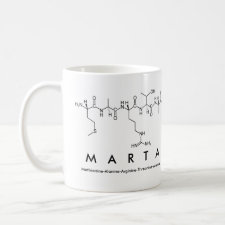
Authors: Cieplak M, Szwabinska K, Sosnowska M, Chandra BKC, Borowicz P, Noworyta K, D'Souza F, Kutner W
Article Title: Selective electrochemical sensing of human serum albumin by semi-covalent molecular imprinting.
Publication date: 2015
Journal: Biosensors and Bioelectronics
Volume: 74
Page numbers: 960-966.
DOI: 10.1016/j.bios.2015.07.061
Alternative URL: http://www.sciencedirect.com/science/article/pii/S0956566315303092
Abstract: We devised and prepared a conducting molecularly imprinted polymer (MIP) for human serum albumin (HSA) determination using semi-covalent imprinting. The bis(2,2'-bithien-5-yl)methane units constituted the MIP backbone. This MIP was deposited as a thin film on an Au electrode by oxidative potentiodynamic electropolymerization to fabricate an electrochemical chemosensor. The HSA template imprinting, and then its releasing from the MIP was confirmed by the differential pulse voltammetry (DPV), electrochemical impedance spectroscopy (EIS), XPS, and PM-IRRAS measurements as well as by AFM imaging. Semi-covalent imprinting provided a very well defined locations of recognition sites in the MIP molecular cavities. These sites populated the imprinted cavities or the MIP surface only. The DPV and EIS response of the MIP film coated electrode to the HSA analyte was linear in the range of 0.8 to 20 and 4 to 80 μg/mL HSA, respectively, with the limit of detection of 16.6 and 800 ng/mL, respectively. The impressively high imprinting factor reached, exceeding 20, strongly confirmed that semi-covalent imprinting resulted in formation of a large number of very well defined molecular cavities with high affinity to the HSA molecules. The MIP selectivity against low-(molecular weight) interferences, common for physiological fluids, such as blood and urea, was very high. There was no response to the presence of these interferences at concentrations encountered in the samples analyzed. Moreover, the chemosensor selectivity to the myoglobin and cytochrome c interferences was excellent while that to lysozyme was slightly lower but still high. The chemosensor was useful for determination of abnormal HSA concentration in a control blood serum
Template and target information: protein, human serum albumin, HSA
Author keywords: human serum albumin, Semi-covalent imprinting, molecularly imprinted polymer (MIP), Electrochemical chemosensor, Thiophene conducting polymer, differential pulse voltammetry, electrochemical impedance spectroscopy, Blood serum albumin



Join the Society for Molecular Imprinting

New items RSS feed
Sign-up for e-mail updates:
Choose between receiving an occasional newsletter or more frequent e-mail alerts.
Click here to go to the sign-up page.
Is your name elemental or peptidic? Enter your name and find out by clicking either of the buttons below!
Other products you may like:
 MIPdatabase
MIPdatabase









